Church Of MO – Review: 2006 BMW K1200R

In his 2006 review of the BMW K1200R, former MO staffer and current MO contributor, Gabe Ets-Hokin called the Bavarian muscle bike a “Gorilla In A Tuxedo.” It’s an appropriate term, as the 1157cc inline-Four packs an approximately 140 hp and 80 lb-ft punch. Essentially a naked version of the K1200S, the lack of any substantial bodywork exposes the K bike’s funky styling and gives a better view of the Duolever front suspension. But as Gabe points out, the big takeaway from the K1200R is its refined approach to going blisteringly fast. Here’s Gabe to give you his complete take on the K1200R from eight years ago. Also, be sure to check out the photo gallery for three pages full of K1200R pictures.
Review: 2006 BMW K1200R
Do you feel a little insulted by the phrase “tuned for torque”? Do you think the perfect bike is a 140 hp standard that pulls wheelies with ease, tops out at 180 mph, but is comfortable enough to ride all day while not making you look like a Matt Mladin wannabe?
We at MO are with you, good reader, and we were excited when BMW announced the naked version of their K1200S Autobahn missile, the K1200R. The word on the street was that it would have almost all the power of the K1200S, but in a minimalist, no-fairing chassis; potential lawsuits and safety-crats be dammed! The bike was introduced the US press last year, and it was a big hit. At least one US magazine named it their 2005 Bike of the Year, and it’s no wonder, the way we saw their editor hustling it around the Streets of Willow racetrack last year. They loved its technological features, comfort and big motor. We like that stuff too, but is it really good enough to be the best bike of 2005?
“How great would it be”, you’ve all wondered “if only we could have a motorcycle with superbike motor and handling, except without the big fairing and windscreen and with a more comfortable seating position?” In the past, big standards from the major manufacturers have always been heavier, slower and softer handling than the bikes the motors were poached from. The Honda 919, for example, uses the motor from the feared and respected Fireblade (CBR 900 RR on this side of the Pond), except it’s dumbed-down to produce less than 100 HP and housed in a steel-tube chassis that is heavier and more flexy than the twin-spar aluminum job found on the RR. The Yamaha FZ-1 (2001-2005) uses a “tuned-for-torque” version of the first-generation YZF-R1 motor, also in a tube-steel chassis. It’s a little better than a 919, but not the naked street-fighter we were hoping for.
BMW, of all people, may have come the closest of anybody to giving us what we wanted. In 2005, they introduced the most powerful BMW motorcycle ever, the K1200S.
This bike had a host of technical achievements in addition to being incredibly fast for a BMW. The engineers at the Motor Works removed the fairing, slapped on a headlight and a few other necessities, and changed the S for an R.
Therefore, technical specifications of this bike are pretty close to the K1200S. It all starts with a sophisticated aluminum alloy frame that bolts the motor in solidly–without rubber-mounting–as a stressed member. Attached to a front is a Hossack-type “duolever” front fork that isolated braking and steering forces in a clever, innovative way; clever enough for the legendary John Britton to include it on his racers. In back is the BMW paralever swingarm, which keeps the dreaded shaft-jacking that makes other shaft-driven bikes unpleasant to ride at a minimum.
What hangs between those two examples of Teutonic wizardry is what makes this bike interesting. The motor is a liquid-cooled four-cylinder inhaling machine with a 79 mm bore and 59 mm stroke for an 1157 cc displacement. Compression is most un-BMW like at 13.0:1, matching its un-BMW like perpendicular-to-the frame engine design. The thing breathes mixture through Bosch fuel injection and an airbox slightly smaller than the S model’s.
That smaller airbox is the only major difference between the S and R motors. It costs the bike about four horsepower and two foot-pounds of torque, but the engineers changed gear ratios to compensate, both in the six-speed gearbox and in the final drive. Last year we measured 144 hp and 85 foot-pounds of torque on our DynoJet dynamometer from the K1200S testbike we had, so expect 140 hp and 83 foot-pounds of torque from the K1200R. The new FZ-1 might make that much horsepower, but we doubt it makes that kind of torque. The best part about this all-you-can-eat-Indian-restaurant-lunch-special-buffet of torque is that this motor is making 60-plus foot-pounds at 3,000 rpm and never lets up until the 10,900 rpm redline.
The K1200R makes a striking first impression with its size, heft and styling. The look is unmistakably BMW, with crazy, Cubist styling that’s all harsh, angular shapes thrust together. The motor is huge, with the massive cylinder block sticking out in front and the big clutch cover sticking out to the side. Steel braided hoses are everywhere. The overall effect is like a piece of equipment from one of the “Alien” movies.
It’s functional, though. The instrument panel is very legible and visible, with the speedometer being a fashionable ovoid rather than a boring circle, and there’s a tiny flyscreen about where the windscreen would be on the K1200S. (Our test unit had the optional larger screen, which lists for $200.) Built-in frame sliders are also a nice touch, although they don’t appear to stick out far enough to protect the radiator or hoses. The bike is finished in urban chic matte silver paint, which tones down the bike and makes it look smaller. However, the paint also makes the plastic panels and trim seem chintzy, even though fit and finish is very nice.
The bike is so interesting visually you want to stare at it all day, but we’re here to ride, right? Switch the key on and thumb the starter and you are treated to a Dizzy Gillespie Big Band of mechanical noises like raspy intake growls, a rhythmic exhaust note and a busy valve train. Throttle response is crisp and precise, and the bike is ready to ride immediately.
On board, the seating position feels perfect. The bike is top-heavy, but the seat is reasonably low, thanks to cut-outs at the front of the seat which allow shorties to just barely put their feet flat on the ground and easily manage the machine (a lower seat is available as an option). The bars are the same as on the K1200S, and place the rider in a very mild forward lean. For something that looks so fierce, the K1200R coddles the rider.
When it’s time to roll, the hydraulic clutch and transmission are smooth enough. The bike wants to leap forward with just a light hand on the throttle, like a slobbering rottweiler on a short leash. The motor is rough and industrial feeling compared to the latest big Japanese fours. As the bike rolls forwards, the front end feels so vague it’s as if the tires are low on air, but as the speed picks up the bike feels a lot more manageable. It never feels light, but you get used to the whole thing quickly.
“Quickly” is how you’ll ride this thing in traffic. Sure, it’s heavy and has slightly vague steering, but the short gearing and 140 hp at the back wheel keep you ahead of the thugs, road-ragers and inattentive imbeciles who populate our public roads. The K1200R’s long wheelbase and shaft drive resist wheelies, but resistance is futile with this kind of power. Threading through traffic is fun; even with all this weight the wide bars give you the needed leverage to turn and dodge through traffic. Give yourself a little extra room, though; the steering isn’t what I’d call precise. The front end feels slightly disconnected from the rider.
Rocket up onto a freeway on-ramp, kick it into sixth gear and hum along at about 80 mph. This is the R’s sweet spot, and you can relax a bit and notice the nice instruments and switchgear.
Message from the Union of American MotojournalistsSince 1983, the UAM has attempted to bring standardization and order to the field of Motojournalism in North America. This has proved to be a daunting task for an organization with fewer than 70 members, many of whom are battling chronic depression, alcoholism and a variety of other mental health and social problems. However, we are almost 28% of the way towards completing the first item on our agenda (dated May 27, 1991), “Standardization of Language Complaining About BMW Switchgear.” The following is the proposed text for our first style guide, due for publishing in the Spring or Summer of 2019:
The switchgear on the (Insert BMW Model Name Here) was comprehensive and had a positive, quality feel, but was confusing to operate. The turnsignal switches are mounted on both bars, with a cancel switch located where the horn button is supposed to be, causing the rider to signal or cancel his signals when he meant to honk at a dangerous, rude or inattentive driver. However, it is a logical system when you think about it and should only be an issue if the rider has multiple bikes he switches among.
We now return you to your regularly scheduled roadtest already in progress.
The K1200R is made for high-speed commuting. In heavy traffic, at 80 mph, running with the flock in their minivans, SUVs and beige Camrys is like playing dodgeball against a team of first graders. Everything else on the road seems so slow, weak and helpless that you can just pick them off one by one. At higher speeds the front end seems to work better and the throttle response is precise on a molecular level. Kick it down to third gear at 80 mph and hit the throttle; the front end gets light and the bike leaps forward, hopefully finding a hole in the traffic, and you’re going 120 in no time at all.
That zany sort of high performance is a stark contrast to the mild and pleasant performance the motor delivers at around 4,000 rpm. In sixth gear at 80 the motor is just thrumming along, with the vibrations not too intrusive. Fuel economy is very good because of this gearing, and I got almost 40 mpg from my 200-mile test loop. Like any good inline-four, you really get two motors, a bone-crushing powerhouse at high rpm and a milder powerplant perfect for long-distance commuting below 7,000.
Two hundred miles should be more than enough range to get you to your favorite twisty roads, and the big K bike is a decent companion. There are better bikes for winding mountain and canyon roads, though; the K1200R demonstrates a profound understeer and the heavy steering and touchy throttle means you never feel really 100 percent confident and safe at a very fast pace on a bumpy, twisty, unfamiliar road. However, on smoother, faster sweepers it does hold a line well once you have it locked in. The motor has enough torque and power to leave it in third, forth or fifth and has more than enough response to pull you out of turns with great vigor. It’s still buzzy and rough feeling, though.
Like that infamous switchgear, the brakes take some getting used to. There’s a noticeable delay while servos come on, but then they are powerful enough with pretty sensitive feel, if you account for the almost total lack of front-end dive because of the Duolever front end. The most frequent complaint I’ve heard about BMWs is the use of complex technology like Hossack front ends and servo-boosted brakes just for the sake of having it. That futuristic-looking front suspension may have worked very well on the hand-built Britten racers, but the slightly vague feel and extra weight may be out of place on a street bike, especially something that’s supposed to be a simple and elemental as the R.
Some of that technology works quite well and is much appreciated, though. The heated grips are something every bike should have. The anti-lock system on the brakes is unobtrusive and works fine; you don’t notice it until you try to pull a stoppie. The optional electronic suspension adjustment (ESA, $775) is also a pretty decent system; you can actually change damping rates on the fly to compensate for different road surfaces or riding styles by pressing a button on one of the switchpods (you can only adjust spring rates when the bike is stationary with the motor off). It actually works, too; you can really feel the difference between the “sport”, “comfort” and “normal” settings, although when I set the suspension to “normal” I felt an urge to shave my back and apply for a job at Starbuck’s.
After riding a couple of hundred miles on the BMW, I didn’t feel sore or tired. The bike is a little harder to handle in the canyons than a smaller, lighter bike, but it also has a presence in traffic and on the freeway like nothing else I’ve ridden. The motor isn’t exactly silky-smooth, but it’s smooth enough to not be annoying and deliciously entertaining at high RPMs. Like almost every BMW I’ve swung a leg over, the K1200R works well as a package, even if its weight, wheelbase and other statistics don’t look so good on paper.
The K1200R is a large, heavy and complex naked standard. It’s also not cheap, at $16,520 as tested (base MSRP is $14,300). As almost always with a BMW, there are competing motorcycles that offer almost as much performance for a less arrhythmia-inducing price. However, these bikes don’t offer what many BMW owners want out of a motorcycle; that solid, refined and practical feel that somehow isn’t boring. It also fulfills the mission of giving the consumer a mostly undiluted naked superbike. The K1200R is a bike you can ride for hours–days–without getting fatigued, while providing a special experience that will endear the bike to you if you successfully bond with it. I don’t think it’s exactly “Bike of the Year” material, but it should provide a satisfying experience to anybody who rides one.
| ** Specifications Courtesy of BMW ** BMW K1200R – MSRP: $14,300 | |
| Engine | |
| Type | Transverse mounted, liquied cooled inline 4-cyclinder |
| Displacement | 1157 cc |
| Bore X Stroke | 79 mm x 59 mm |
| *Claimed* Horsepower | 163 bhp @ 10250 rpm |
| *Claimed* Torque | 94 lb/ft @ 8250 rpm |
| Valve Gear | DOHC, chain-driven with bucket tappets |
| No of cylinders | 4 |
| Compression Ratio | 13.0:1 |
| Engine Management | BMW Engine Controller – BMS K |
| Valves per Cylinder | Four |
| Valves | 2 x 32.0 mm intake / 2 x 27.5 mm exhaust |
| Fuel Tank | HDPE, internal pump and internal filter |
| Alternator W | 580 Watts @ 14 Volts |
| Battery V/AH | 12 Volts / 14 Amps/hour |
| Engine Summary | Laterally mounted, this 16-valve, water-cooled K series engine angles the cylinders forward by 55 degrees, lowering the center of gravity significantly. Inspired by Formula One technology, this high-powered engine has a narrow profile, close gear ratios, and precise 6-gear shifting. Gearbox response is immediate, which means startling acceleration, amazing horsepower, and absolutely mind-bending performance. |
| Drivetrain | |
| Clutch | 151 mm, multi-disc oil bath |
| Gear Box | 6 speed gear box |
| Primary Transmission | 1:1.559 |
| Gear Ratios | I: 2.52:1 II: 1.84:1 III: 1.45:1 IV: 1.28:1 V: 1.14:1 VI: 1.01:1 |
| Final Drive System | Enclosed driveshaft with two universal joints |
| Final Drive Ratio | 2.91:1 |
| Frame & Suspension | |
| Frame | Composite aluminum frame |
| Front wheel suspension | BMW Duolever |
| Rear wheel suspension | BMW EVO Paralever |
| Spring Travel front/rear | 4.5 inches / 5.3 inches |
| Ground Clearance | N/A |
| Handlebar center point angle | 61.0 degrees |
| Brakes | |
| Brake System | BMW EVO |
| Front Brakes | Two, four-piston fixed calipers |
| Front Rotor | 12.6 inch dual floating rotors |
| Rear Brakes | Single, two-piston fixed caliper |
| Rear Rotor | 10.4 inch single, fixed rotor |
| Actuation | Hydraulic, DOT 4 fluid type |
| Wheels & Tires | |
| Front Wheel | 3.50 x 17 cast alloy, five double-spoke |
| Rear Wheel | 5.50 x 17 cast alloy, five double-spoke |
| Front Tire | 120/70 x 17 tubeless Michelin Pilot Road N 120/70 ZR17 M/C (58W) Bridgestone BT014 F Radial F120/70 ZR17 M/C (58W) Bridgestone BT020 F L Radial 120/70 ZR17 M/C (58W) Dunlop D220F ST 120/70 ZR17 M/C (58W) Metzeler Sportec M-1 B 120/70 ZR17 M/C (58W) Metzeler Roadtec Z6 K 120/70 ZR17 M/C (58W) Michelin Pilot Power B 120/70 ZR17 M/C (58W) |
| Rear Tire | 180/55 x 17 tubeless Michelin Pilot Road K 180/55 ZR17 M/C (73W) Bridgestone BT014 R Radial F 190/50 ZR17 M/C (73W) Bridgestone BT020 R CC Radial 180/55 ZR17 M/C (73W) Dunlop D220 ST P 180/55 ZR17 M/C (73W) Metzeler Sportec M-1 B 190/50 ZR17 M/C (73W) Metzeler Metzeler Roadtec Z6 C 180/55 ZR17 M/C (73W) Michelin Pilot Power W 190/50 ZR17 M/C (73W) |
| Dimensions | |
| Overall Length | 87.7 inches |
| Overall Width | 33.7 inches |
| Wheelbase | 62.2 inches |
| Seat height | 32.3 inches |
| *Claimed* Weight, unladen, with full tank | 546 lbs |
| Max permissible weight | 992 lbs |
| Fuel Capacity | 5.0 U.S. gallons ; including 1 gallon reserve |

Troy's been riding motorcycles and writing about them since 2006, getting his start at Rider Magazine. From there, he moved to Sport Rider Magazine before finally landing at Motorcycle.com in 2011. A lifelong gearhead who didn't fully immerse himself in motorcycles until his teenage years, Troy's interests have always been in technology, performance, and going fast. Naturally, racing was the perfect avenue to combine all three. Troy has been racing nearly as long as he's been riding and has competed at the AMA national level. He's also won multiple club races throughout the country, culminating in a Utah Sport Bike Association championship in 2011. He has been invited as a guest instructor for the Yamaha Champions Riding School, and when he's not out riding, he's either wrenching on bikes or watching MotoGP.
More by Troy Siahaan




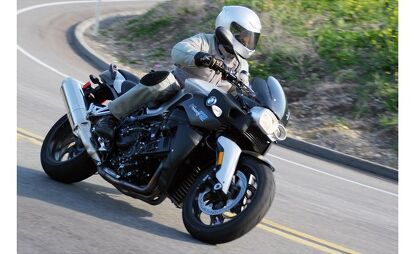










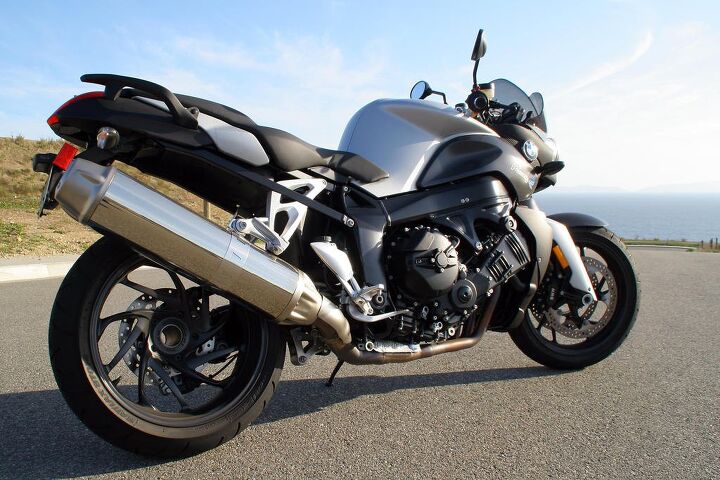









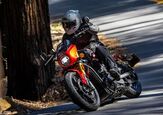
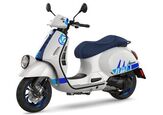
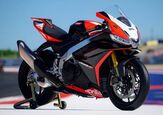
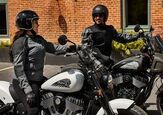
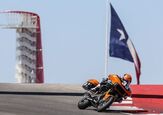
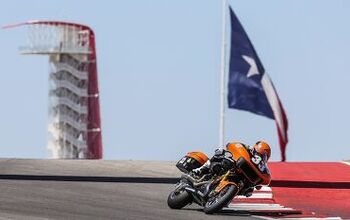
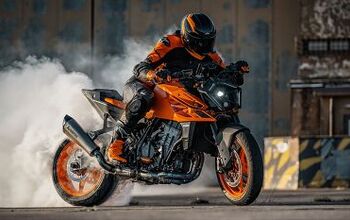


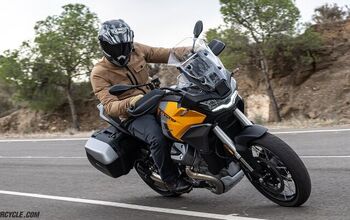
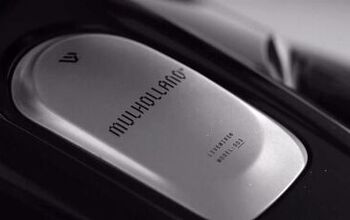

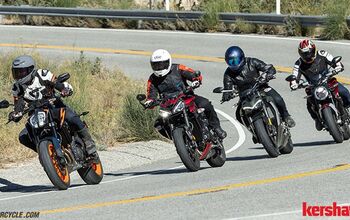

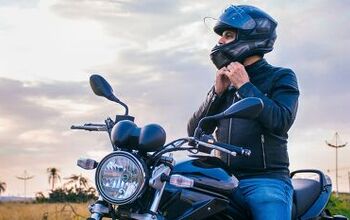
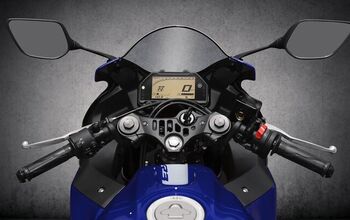
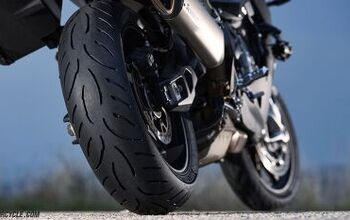
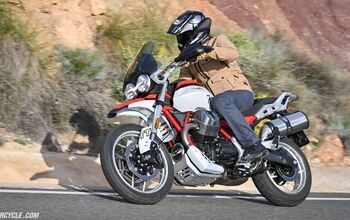
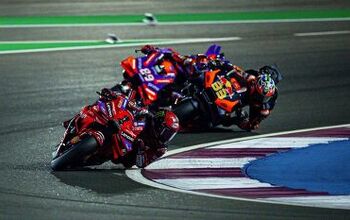
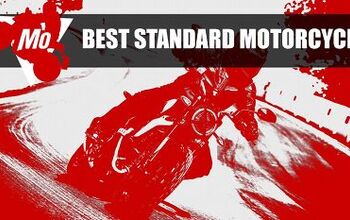
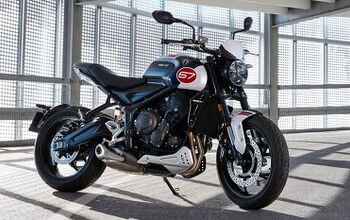
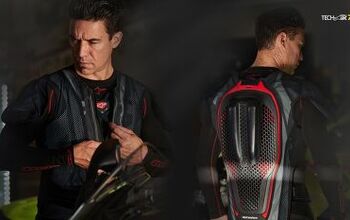
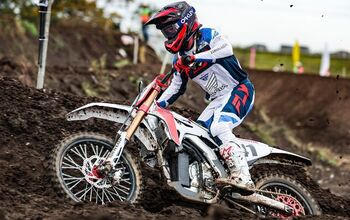
Comments
Join the conversation
Very cool article on an interesting motorcycle. I love these features as they bring up bikes from the not so distant past that I may have missed, or just enjoy reading about again.
The "made for high-speed commuting. In heavy traffic, at 80 mph, running with the flock in their minivans, SUVs and beige Camrys is like playing dodgeball against a team of first graders. Everything else on the road seems so slow, weak and helpless that you can just pick them off one by one" passage is brilliant and it had me laughing out loud. It was one of these evil, knowing laughs too, as that passage perfectly captures what riding a power laden street bike is about.
It occurred to me the dirt bike in my garage is still better. One is severely hemmed in on the street, the legal consequences for high performance riding are brutal.
On the other hand, one can do stand up wheelies all over the place and ride like an idiot on a dirt bike, with only respect for potential grievous injury as your guide, and be socially acceptable. That is why dirt bikes rule. The rider can go as far as they dare off road, no limits but our own.
One only as to go to the track with their high performance street bike to remove the barriers. Have done that too, it is the closest thing to a dirt bike rush while in the saddle of a pavement bound machine.
"Union of American Motojournalists", heh, heh.